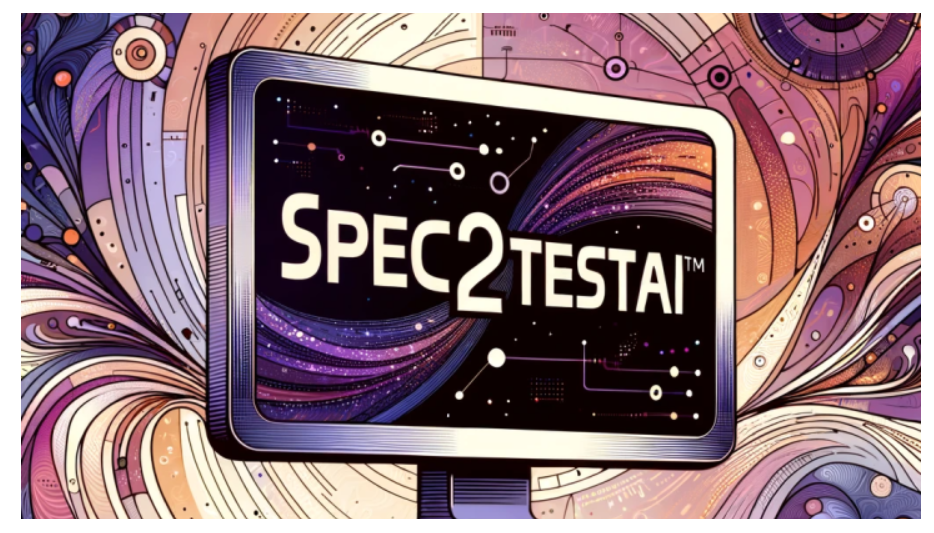Blog
Accelerating Market Readiness and Enhancing Business Value with Spec2TestAI’s Precision in Agile Project Management
Scott Aziz | January 9, 2024
Optimizing Agile Software Development with Spec2TestAI: A Deep Dive into Spec2TestAI’s 5 Advanced Measurement Frameworks
Introduction: One of the tenets of agile software development is to ensure quality from the outset. An effective quality strategy must include targeted methods to prevent and remove defects as early as possible in the agile lifecycle. Spec2TestAI is purpose-built to analyze requirements, user stories, and acceptance criteria through five comprehensive measurement frameworks encompassing 32 distinct attributes. This enables organizations to detect and mitigate software defects as early as possible in the agile lifecycle. Spec2TestAI’s creative use of artificial intelligence is second to none in the requirements measurement category.
In addition to measuring each of the 32 different attributes below, Spec2TestAI automatically provides targeted contextual advice around each of the attributes. This advice helps the user understand how to improve their requirement or user story. Spec2TestAI will also point out areas that need correction relative to the standard defined in each framework. This allows the user to fix the requirement quickly and get it in line with the standardized framework attributes, but it also enforces learning so that the user can gain the knowledge they need to write better requirements. This article summarizes each of the 32 different measures, illustrating how each contributes to an effective shift-left analysis and testing strategy.
1. INVEST Criteria Framework:
• Independent: Spec2TestAI uses advanced NLP techniques to analyze user stories for dependencies, ensuring each feature can stand alone, thus enhancing modular development.
• Negotiable: By assessing the flexibility of user stories, the platform ensures adaptability in the development process.
• Valuable: Spec2TestAI evaluates the direct user and business value of each story, prioritizing features that offer significant returns.
• Estimable: The platform checks for sufficient detail, ensuring accurate planning and resource allocation.
• Small: Spec2TestAI gauges story size and complexity, advocating for manageable and iterative development segments.
• Testable: Ensuring stories are testable, Spec2TestAI lays the groundwork for robust quality assurance from the start.
2. SMART Criteria Framework:
• Specificity: The platform measures the specificity of the acceptance criteria, fostering clear and targeted development efforts.
• Measurable: Spec2TestAI establishes whether there are observable outcomes, enabling objective assessment of feature completion.
• Achievable: Assesses the feasibility of criteria, based on the technical information outlined in the user story and acceptance criteria, ensuring realistic development goals.
• Relevant: Measures how well the acceptance criteria aligns with the core functionality of the user story.
• Time-bound: The platform assesses time constraints where applicable, aiding in timely project execution.
3. REAL Criteria Framework:
• Strategic Outcome: Measures alignment of stories with broader business goals, ensuring long-term value.
• Business Relevance: Assesses whether the requirement focuses on addressing specific business needs, enhancing the impact of each feature.
• Clarity and Specificity: Measures prioritization of clear and precise story descriptions, reducing misunderstandings.
• User Value: Evaluates the direct benefit to end-users, ensuring user-centric development.
• Measurability: Incorporates measurable outcomes, allowing for accurate validation of functionality.
• Business Priority: Weighs the story’s importance within the business context, optimizing resource allocation.
• Strategic Alignment: Ensures each story contributes to overarching business strategies.
• Feasibility: Assesses practicality within project constraints (identified in the user story and/or acceptance criteria), ensuring achievable objectives.
• Requirement Perspective: Measures the emphasis on the client’s or users viewpoint, guaranteeing alignment with client business needs.
4. COMPLETENESS Framework:
• User Role: Identifies involved stakeholders, clarifying the target audience for each feature.
• User Goal/Objective: Measures whether there is good articulation of the user’s aims or challenges, driving purposeful feature development.
• Acceptance Criteria: Assesses whether the story includes detailed conditions for completion, setting clear development targets.
• Scope and Boundaries: Measures the scope and extent of functionality, avoiding scope creep.
• Dependencies: Determines the existence of inter-feature relationships, aiding in organized development sequencing.
• Epics/Themes: Measures adherence to a higher level epic or theme (if defined in the user story), ensuring coherence and alignment.
5. Ambiguity Measures (7-point Framework):
The Ambiguity Measures Framework uses a seven-point system to eliminate uncertainties in requirements, enhancing clarity and precision.
• Vague Terms: Clarifies subjective language, promoting uniform understanding.
• Unquantified Metrics: Specifies concrete measures, preventing misinterpretation.
• Open-ended: Limits and removes ambiguous phrases, ensuring defined project boundaries.
• Multiple Meanings: Resolves contextual misunderstandings, enhancing clarity.
• Lack of Examples: Encourages illustrative details, especially for complex features.
• Undefined Acronyms: Generates acronym explanations, avoiding confusion.
• Assumptions: Identifies unfounded assumptions, ensuring comprehensive understanding.
Conclusion: Incorporating these advanced measurement frameworks, Spec2TestAI not only facilitates a significant shift-left in the agile process but also redefines software quality assurance. With over 2,000 hours of AI training, Spec2TestAI offers teams actionable insights for efficient and superior software development, marking a new era in agile project management.







